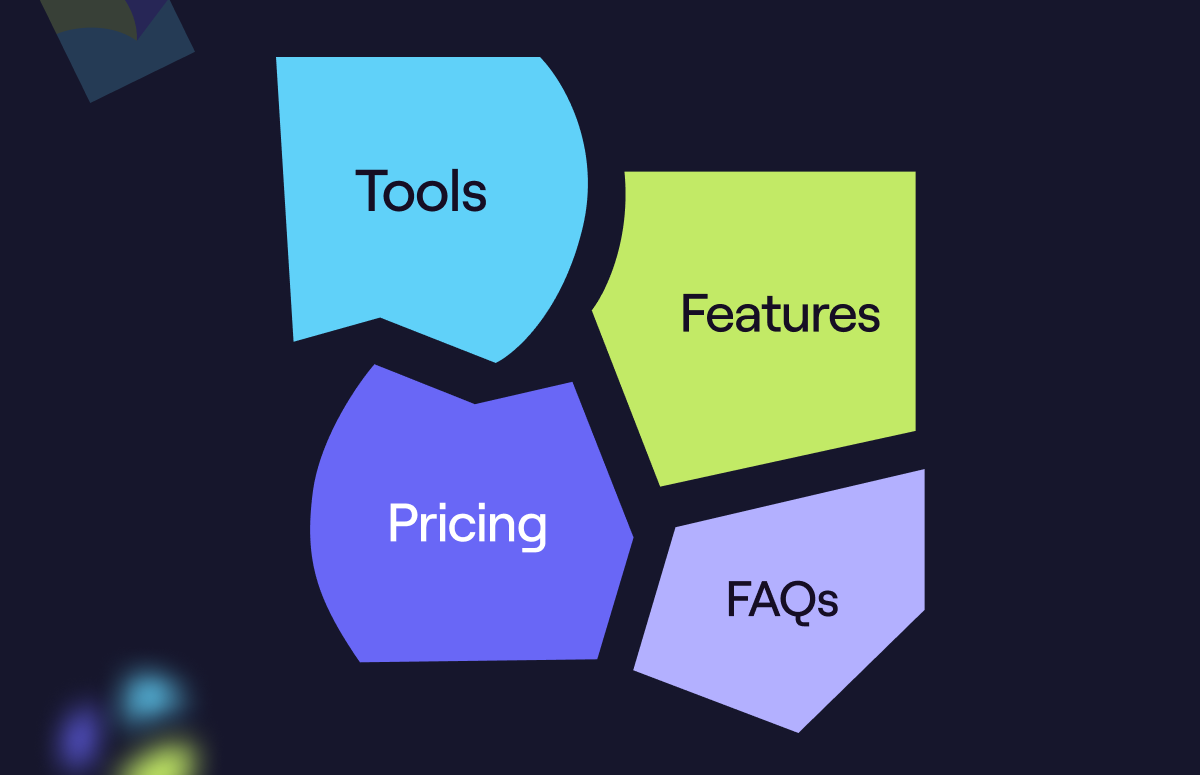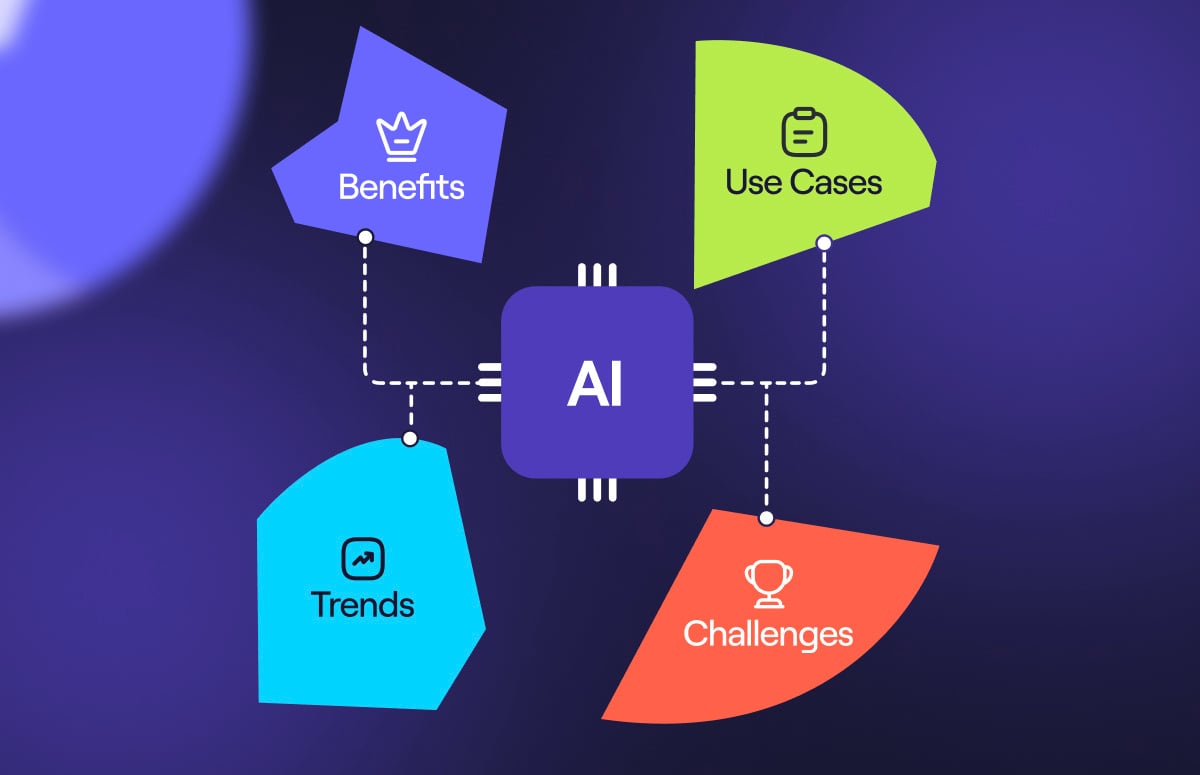Lead Generation for IT & Technology Companies [13 Strategies]
13 steps for generating tech leads:
Unless you’re Google or Apple, you will have to fight for your customers’ attention when you release a new product.
Easier said than done, right?
Implementing the right lead generation strategies for technology companies can help you flourish in such a competitive environment.
The tech industry’s growth trajectory is unique. Hence, companies operating within it need tailored techniques to promote their products to customers.
This article shares the best lead generation techniques for IT, technology, and software companies.
13 ways to generate leads in tech
The technology sector and IT industry are growing at breakneck speed. Unlike traditional organisations, tech companies continuously improve their products and services to sell them with new features. They’re even willing to take risks if they see future potential.
For example, it’s not uncommon for them to launch new business lines that haven’t even existed before.
Technology companies need agile lead generation techniques and strong SaaS marketing communication to gain exposure for their company, products, and services.
A lead might have shown interest in your product or service, but that doesn’t mean they’re ready to make a purchase. Generating targeted leads in the tech, IT, and SaaS industries works best if you educate people about your product or service’s benefits so that they eventually convert into customers.
So, how do you know your lead generation works?
It’s when your brand name is the first thing that comes to your prospect’s mind when they come across a problem that your product can solve. And at that point, they’re ready to initiate a sales conversation with your company.
1. Call prospects directly
Cold calling isn’t dead. Our latest report proves this.
In fact, it’s a great lead generation strategy for technology and IT companies, especially if you’re selling to C-level and VP buyers.
With sales intelligence platforms like Cognism, you can take a proactive approach to finding leads.

Even though modern buyers don’t need a sales rep to make purchasing decisions, you don’t want to rely solely on the buyer to find your product and qualify themselves, right?
Cognism provides access to a global business contact database with phone-verified mobile numbers to connect you with 87% of your list.
So, pick up the phone and try out our CEO prospecting scripts!
If you’re an enterprise SaaS company, we recommend reading a case study about Cloudreach, an Atos company.
This technology company used Cognism’s browser extension to gain 100-150 leads per week per rep.

SDR Manager @Cloudreach

2. Set objectives
Before you draft a lead generation strategy for your technology company, you must consider the objectives and key results you want to achieve.
Setting them helps measure progress and align strategic goals across your organisation. The OKRs methodology gets everyone to move in the same direction. It works well because it’s a simple, fast-paced process that engages each team.
You can set OKRs, track them, and re-evaluate them (quarterly) if needed. Don’t be afraid to adapt the framework to your needs. Take a lesson from Spotify, which experienced hyper-growth and found that OKRs slowed them down.
The tech company resigned from setting OKRs on an individual level. Instead, it set out its priorities at the corporate level and let teams decide how to achieve them.
3. Define and adapt to your target audience
To generate leads successfully, you need to define an ideal customer profile (B2B) or buyer persona (B2C).
This simple lead gen technique gives technology companies clearer, more concrete insight into their B2B audiences’ interests, challenges, and buying habits.
It also helps tech businesses appeal to their clients so much that they share their contact information, e.g., via forms, to learn more about the offer. If you offer multiple products, you can create different buyer personas. But they must all fit your brand.
However, the greatest challenge in lead generation for technology businesses nowadays is adapting to changing customers. That’s why it’s important to capture the customer’s voice frequently.
4. Bring value with intent data
As many as 87% of customers begin product searches online, and they rarely feel the need to contact salespeople for advice. They gather as much information as possible from various sources to make an informed decision about their purchase.
B2B technology companies can generate better leads with intent data. It helps get prospects’ attention right when their buyer journey begins. And before they learn about your competitors!
Tempting, right?
To generate leads for software sales, take advantage of sales intelligence solutions that provide data to help identify prospects’ buying signals. These solutions create opportunities to pitch your product or service to the right person at the right time and then guide their decision-making process.
The main benefit of intent-driven account-based marketing is targeting a focused group of buyers. This allows you to create personalised lead gen campaigns rather than targeting a generic audience.
Gartner predicts that more than 70% of B2B marketers will use third-party intent data for lead generation by the end of the year. So don’t hesitate to contact a sales intelligence company like Cognism.
If you want to learn more about intent data, watch the video below, where we explain the basics. 🎬
5. Use short videos to explain complex data
Creating valuable and educational SEO content is one of the main ways of generating leads for technology companies and startups. Most businesses choose blogs as their platform for reaching out to prospects.
However, one of the pillars of lead generation for technology companies is experimentation.
Think about how popular TikTok is as a platform now. And some even prefer to use it as their search engine. It’s a great opportunity for new IT and software companies to increase brand visibility.
Short videos are also a great way to convey complex information concisely, which is another reason why tech businesses should consider creating them.
Most people find audio-visual product explainers appealing. Short-form videos receive 2.5 times more engagement than long-form. You can also create videos to answer the most common questions and address your product’s strengths.
6. Strike a balance between gated and ungated content
Companies in the IT industry can easily generate leads by creating gated content. You can think of gated content like a transaction—you’re asking leads to “pay” for premium materials (e.g., white papers and recorded webinars) with their contact information.
To ensure this sales strategy’s success, ensure your visitors know what’s behind the gate. People look for visual, research, or influencer-backed content that tells a valuable story. They don’t mind revealing their contact details in exchange for:
- White papers.
- eBooks.
- Industry newsletters.
But you can’t simply gate all of your materials and hope for the best.
In marketing circles, there’s a debate going on about the pros and cons of using gated vs. ungated content. While gated content can generate a fair share of leads for software companies, ungated content builds trust and brand awareness.
That’s why good lead generation specialists in tech companies use Pareto’s law, which states that 20% of your audience is responsible for 80% of your success. They create 20% of gated content and leave the rest ungated, achieving record-breaking revenue.
7. Ask your customers to review your product
One of the most effective B2B lead generation strategies for technology companies is reaching out to their loyal, happy customers and asking them to leave you a review.
Much like we would ask friends and family before making a purchase, consumers trust the words of other consumers much more than companies. That’s why authentic, up-to-date reviews from real users can be a huge help in building your online reputation.
While some reviews come organically, you can contact existing, fully onboarded customers with an email campaign and nudge them with an offer (e.g., a discount or an Amazon voucher).
It’s where prospects can find your company and compare it with others in the tech industry. This is especially beneficial for startups that compete with mature tech companies.
If you’re unsure which review sites to focus on, Google your competitors. See which sites they are reviewed on—you probably want to be there, too.
8. Offer free trials or freemium products
Technology and SaaS companies can also generate leads by offering limited-time free access to their product (free trials) or access to basic features of their product (freemium model).
Both strategies give prospective customers a chance to test a product or service’s potential and help them make their decision.
This is the best lead generation strategy for startups selling intangible products or services, such as software, apps, games, and analytics. It’s easier to let the prospects experience this type of product instead of explaining its unique value proposition.
This strategy also reduces the need for aggressive selling and takes the pressure off sales teams, which is great for small tech companies. Prospects get real value and are willing to provide their contact details.
👉 Check out the best ways to generate free business leads.
Want to try Cognism’s data for free? Get a sample to test it out.
9. Host webinars and virtual product demos
Webinars can be a top content format for accelerating and converting leads in the middle and late stages of the funnel.
They also indicated unique experiences with:
- Direct sales outreach.
- Virtual field events.
- Virtual software demos.
Technology companies should incorporate those techniques if, for some reason, they can’t offer their users free trials. It provides insightful, digestible, and often actionable content that’s invaluable to the end-user.
They find this format effective for interacting with customers and increasing lead conversion rates. If you invite other tech expert contributors, you can create easily shareable webinar content.
The primary challenge technology businesses experience with webinars as a lead generation strategy is attendance. That’s why it’s so important to have the sales team on board to reach out to target accounts and find out what they’d like to get out of specific items that are being covered in the webinar.
10. Create a content marketing funnel
Creating positive experiences for the end-user is the easiest way for software companies to generate leads. Offering sound solutions to customers’ common problems increases lead conversion rates.
In the case of inbound lead generation, focus on creating content for the different stages of the sales funnel: awareness, consideration, and decision.
- In the first stage, when customers discover the issue, they look for expert guides or whitepapers.
- Next, they try to define the cause of it by researching available solutions.
- Finally, the buyer narrows down the options to a few and considers their pros and cons to make the final decision.
Technology companies can use this lead generation technique to become market leaders in their field. The aim is to produce transparent, educational, entertaining, and relevant content.
If you understand where your buyer is in their journey, you can personalise your sales strategy to match their expectations, which results in easier conversion.
11. Test messaging on landing pages
Building landing pages is a basic strategy for generating leads for software companies.
They give your users a compelling, focused experience, and by running landing page tests, you get more control over your campaigns.
But how can you ensure high engagement and conversion rates from your ICP?
Many companies fall into the trap of running more A/B tests, switching a blue button with a red button, and adding ‘enterprise’ to the headline to personalise the page.
Does that do the trick?
Not necessarily.
Developing a narrative that resonates with your ideal audience is what really moves the needle. You can test and validate your messaging in-house or use customer surveys or messaging testing tools that provide qualitative feedback.
The insights you collect from your target customers will help you fine-tune your messaging and inform broader lead generation strategies.
12. Monitor performance
Tracking the performance of your strategies tells you which ones work best and which ones need improvement. You can then stick to those that generate the most qualified leads for your technology company.
There are different types of metrics you can track. For example:
- Campaign metrics.
- Content metrics.
- Paid ads metrics.
- BOFU and TOFU metrics.
Whichever you decide to measure, make sure they correspond to the objectives you set at the beginning.
Some of the universal lead generation KPIs for tech companies are:
- Organic traffic: how many visitors are attracted to your website?
- Traffic-to-lead rate: how many visitors to your website convert into new leads?
- Click-through rate: how many people click on a link on your landing page or email to learn more about your offer?
- Conversion rate: what amount of traffic to your pages converts into new leads?
- Cost per lead: how much do you need to pay to generate one new lead?
13. Try account-based marketing (ABM)
If you want to move upmarket with lead generation and targeting enterprise-sized organisations, you might want to try ABM.
In summary, ABM works when sales and marketing collaborate to target key accounts that present significant revenue opportunities. It can be lucrative when done well!
Here at Cognism, we define ABM in three different ways:
- 1:Many ABM: This is a mix of vertical and territory campaigns. The targeting is broad but is based on a particular list of accounts where we can deliver messaging that will resonate with them.
- 1:few ABM: These campaigns have targeted messaging and low-touch personalisation where possible. Here the list is even smaller than 1:Many ABM.
- 1:1 ABM: This is the highest level of personalisation of our ABM campaigns. We create awareness within large enterprise accounts and work with sales to engage as many people on the buying committee as possible.
What is lead generation in the IT and SaaS sectors?
Lead generation in the IT and SaaS sectors involves identifying and attracting potential clients. Companies use strategies like content marketing, account-based marketing, and sales intelligence tools to connect with decision-makers. The software’s intended end-user will determine who the decision-maker is.
It used to be that IT would get sign-off on everything. But with the evolution of SaaS, it’s much easier for people to make changes to the tech stack without bringing IT into the loop.
IT lead generation tactics aim to nurture these leads by educating them on the benefits of their solutions and guiding them toward a purchase.
Key takeaways
Technology companies’ lead generation needs unique strategies to maintain growth and stay competitive.
Setting and monitoring the right goals is the basis for successful lead generation.
B2B tech companies can easily generate leads based on their ideal customer profiles and intent data.
SaaS and software startups can attract more leads by offering free trials and freemium versions of their products and customer success stories on review sites.
Besides building optimised landing pages, tech companies can create a content marketing funnel that reflects the buyer’s journey and experiment with using short-form videos, webinars, direct demos, and gated content.


-1.jpg)
